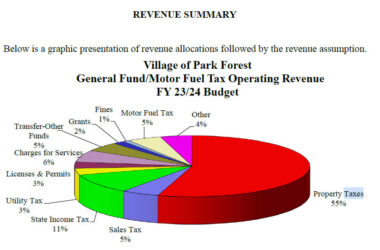Initiative Will Ensure Downtown Construction Projects Support Jobs and Economic Growth in Underserved Communities
CHICAGO–(ENEWSPF)–February 19, 2016. Mayor Rahm Emanuel yesterday announced an initiative that will generate millions of dollars in new investment into underserved communities throughout Chicago. The proposal will reform existing ordinance to allow developers to obtain additional square-footage for construction projects in the downtown area in exchange for investments to support neighborhoods in need of jobs and economic growth.
“Today we are establishing a new norm in Chicago where our most thriving areas will help our most struggling neighborhoods and communities. It involves looking at every investment we make in Chicago – public, private and non-profit – through a neighborhood lens and having them meet a simple test: do they also provide economic and job opportunities for residents from underserved neighborhoods,” Mayor Emanuel said. “My goal is to ensure that every resident in every neighborhood of Chicago has an opportunity to participate in the future that we are building in Chicago and by working together we can make that goal a reality.”
The city’s current Zoning Bonus Ordinance enables additional square-footage in downtown development projects in exchange for provisions that provide limited public benefit. The Mayor’s initiative will revamp the current system by eliminating outdated bonuses, closing loopholes and establishing a new funding source for economic development projects in underserved neighborhoods.
Based on recent downtown construction trends the initiative could produce an estimated tens of millions of dollars in neighborhood improvements over the next several years. Examples of neighborhoods that could directly benefit include Greater Englewood, Auburn Gresham and Garfield Park.
Under the plan downtown developments will be able to pay for a Neighborhood Opportunity Bonus in exchange for the ability to add square-footage to projects. The revenue from the bonus will be invested into a fund that can only be used to support business development and job growth in neighborhoods facing poverty, high unemployment and other indicators of underinvestment by the private market. For example, the fund could support projects like reviving a commercial retail corridor or bringing a new grocery store to a food desert. Similar to the affordable housing process, the City Council will approve projects. Additionally, the city will engage residents and stakeholders in an open process for development proposals. A publicly-accessible report on the Neighborhood Growth Fund will be provided to the City Council on an annual basis and the city will post information on all projects supported by the fund.
“The new system would directly extend the benefits of a strong downtown to neighborhoods with unrealized potential,” David L. Reifman, commissioner of the Department of Planning and Development said. “It will generate funding to support businesses and residents, and help distribute the benefits of downtown growth on a more equitable, neighborhood level.”
The proposal will eliminate outdated bonuses and close loopholes that provide limited public benefit. Currently, the city provides additional square-footage to developments for including features like winter gardens, underground parking garages and outdoor plazas. These are features that primarily benefit the development itself. The Mayor’s proposal will ensure that these bonuses are provided to benefit city-wide objectives like neighborhood growth and job creation.
Chicago has a fast-growing urban center and the Mayor’s reforms will also help accelerate this growth by allowing for additional development in areas adjacent to zoning districts currently designated as “downtown.” Developers can access this expanded Neighborhood Opportunity onus incentive by working with their aldermen and the Department of Planning and Development through the existing rezoning process.
The reforms will be proposed to the City Council this spring and take effect immediately upon passage.
Source: http://www.cityofchicago.org








